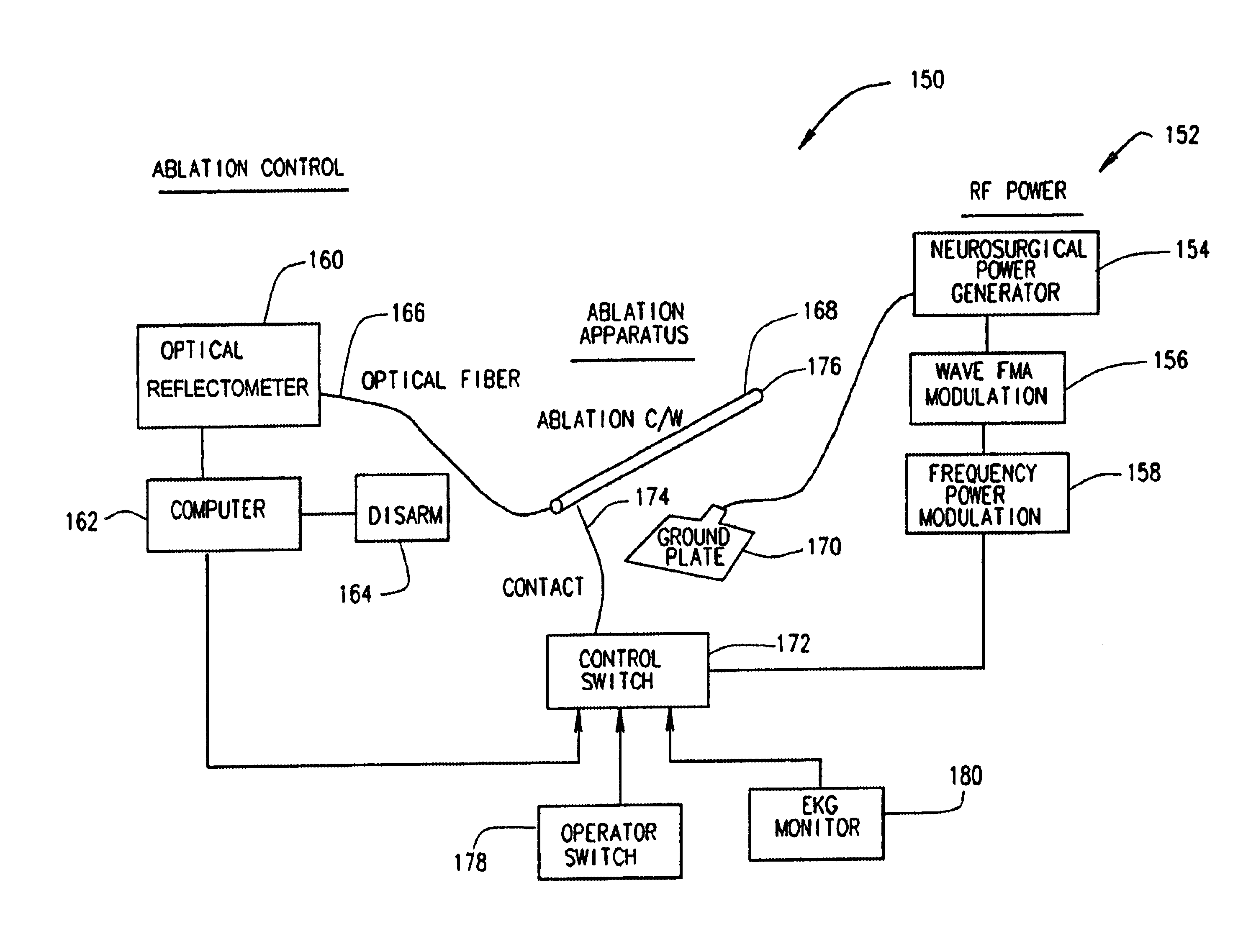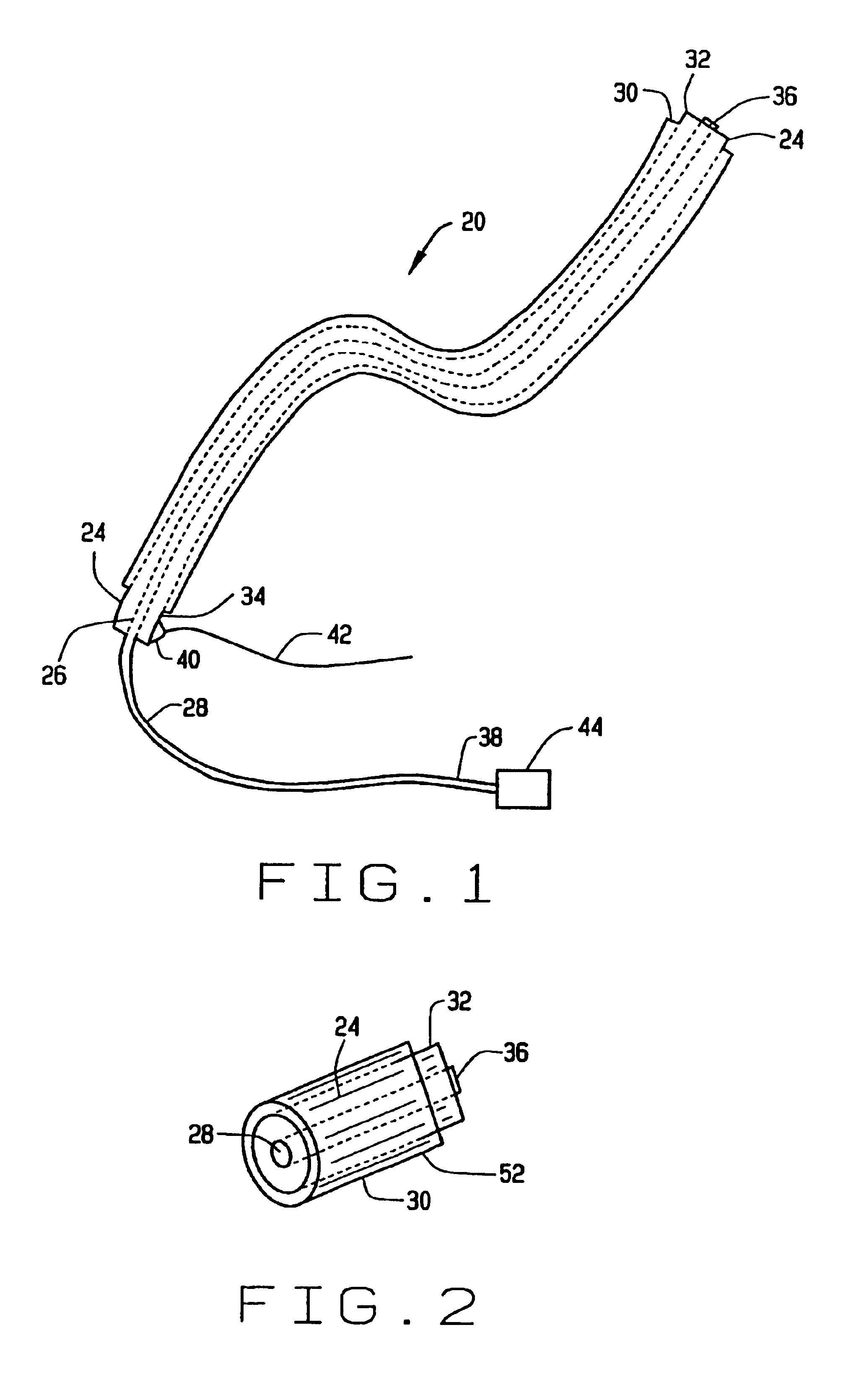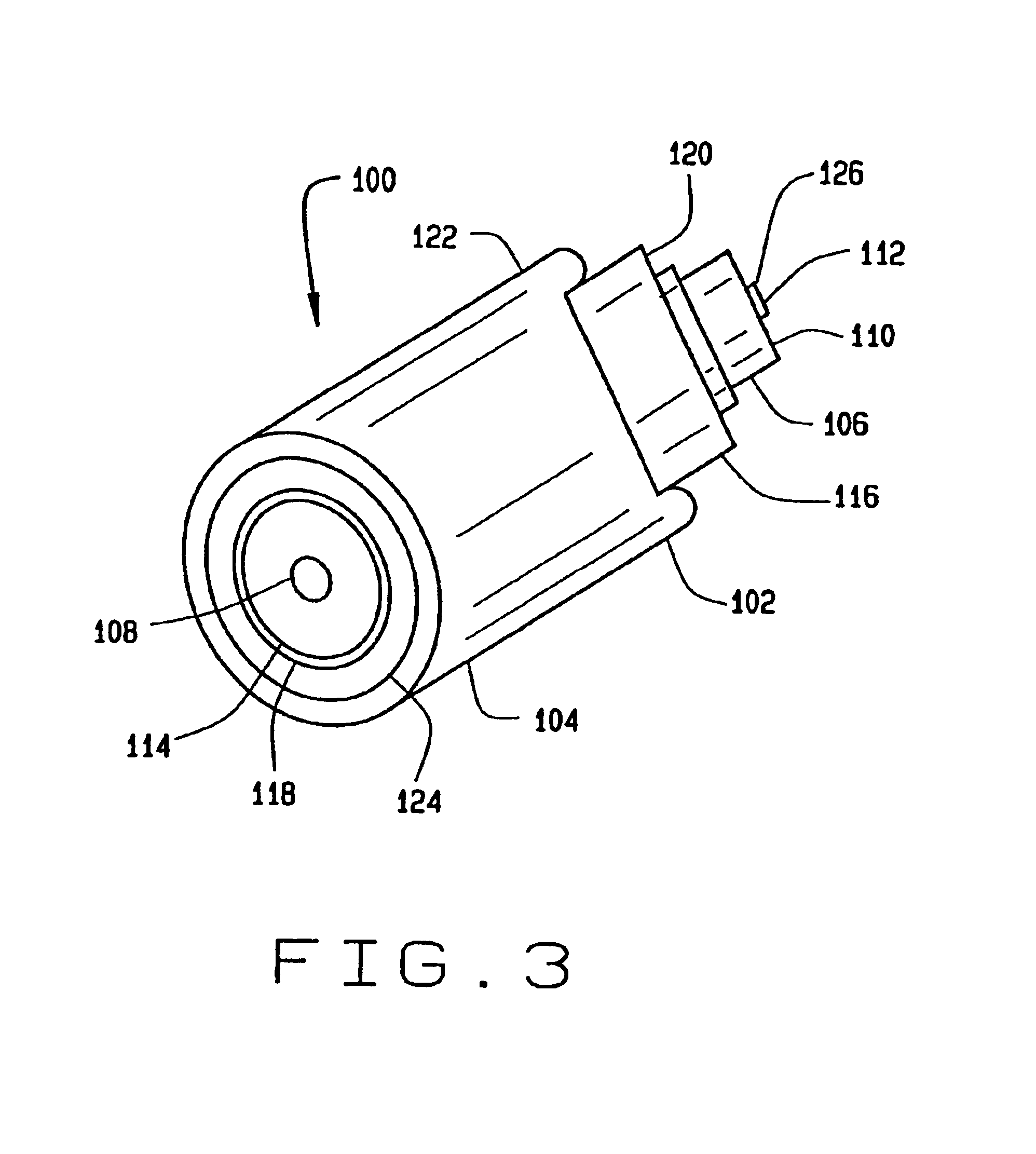Radio frequency guide wire assembly with optical coherence reflectometry guidance
a technology of optical coherence reflectometry and guide wires, which is applied in the direction of medical science, surgical instruments details, surgery, etc., can solve the problems of difficult to guide known guide wires through the body without risking damage, and the difficulty of guiding known guide wires through the body without substantial risk of damage or puncturing the artery wall,
- Summary
- Abstract
- Description
- Claims
- Application Information
AI Technical Summary
Benefits of technology
Problems solved by technology
Method used
Image
Examples
Embodiment Construction
FIG. 1 illustrates one embodiment of a guide wire assembly 20. In one application, guide wire assembly 20 utilizes optical coherence reflectometry (OCR) to control an RF ablation feature implemented using guide wire assembly 20. Referring specifically to guide wire assembly 20, there is included a metal guide wire 24 having a cylindrical bore 26 therethrough. An optical fiber 28 is located within bore 26 of guide wire 24. Guide wire assembly 20 is configured to be inserted into a body passage (not shown) such as a blood vessel. Guide wire assembly 20 further includes an insulation coating 30 extending over guide wire 24 as further described below. Guide wire 24 has a distal end 32 and a proximal end 34 and optical fiber 28 also includes a distal end 36 and a proximal end 38. As referred to herein, “distal end” refers to an end first inserted into the body passage and “proximal” refers to an end opposite the “distal end”. Distal ends 32 and 36 are positioned within a blood vessel (no...
PUM
| Property | Measurement | Unit |
|---|---|---|
| frequency | aaaaa | aaaaa |
| diameter | aaaaa | aaaaa |
| diameter | aaaaa | aaaaa |
Abstract
Description
Claims
Application Information
 Login to View More
Login to View More - R&D
- Intellectual Property
- Life Sciences
- Materials
- Tech Scout
- Unparalleled Data Quality
- Higher Quality Content
- 60% Fewer Hallucinations
Browse by: Latest US Patents, China's latest patents, Technical Efficacy Thesaurus, Application Domain, Technology Topic, Popular Technical Reports.
© 2025 PatSnap. All rights reserved.Legal|Privacy policy|Modern Slavery Act Transparency Statement|Sitemap|About US| Contact US: help@patsnap.com



